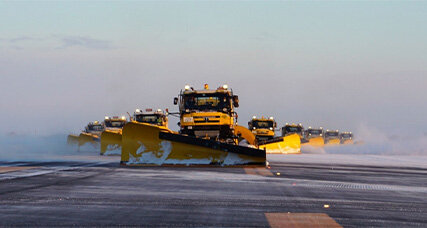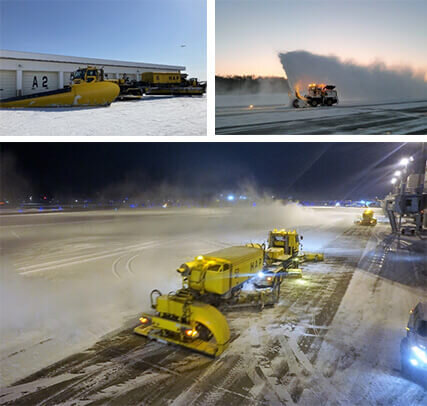No.44 In 2022
Title
The Power of Snow Removal to Protect Runways - Passing on snow removal skills to fight against heavy snowfall -
Recipient
Hokkaido Airports Co., Ltd. CHIZAKIDORO Co., Ltd. Hokkaido Branch

Reason for award
The responsibility of transportation infrastructure operators is to provide uninterrupted transportation services throughout the year. In our country, during the winter months, snow removal and melting are essential services and, from a business management perspective, are also a cost component. New Chitose Airport was initially established and managed by the Japanese government but was privatized along with six other airports in Hokkaido, and all have been operated by Hokkaido Airport Co. Ltd. (HAP) since June 2020. Although air passenger traffic plummeted due to the spread of the coronavirus, the preceding year of 2019 saw a total of 24.6 million domestic and international passengers. New Chitose Airport ranks fifth in the nation in terms of passengers with 67,000 passengers and 400 airplanes per day.
In addition, this airport is a vast gateway to the Hokkaido region. The snow removal area covers 275 hectares. This is supported by the snow removal facilities and equipment managed by HAP and Chizakidoro Co. Ltd.'s "snow removal team," which is entrusted with snow removal projects.
Snow removal equipment is required to clear snow from the runways, and among these are some of the largest pieces of equipment in our country. The airport has snow storage pits, where snow is accumulated during the winter and converted into heat, which, in turn, is used as a power source for cooling in the summer. HAP also works with airlines to clear snow and ice from aircraft in accordance with international rules and regulations to ensure that aircraft can safely use the runways. The snow removal team consists of approximately 200 members from Chizakidoro Co. Ltd.。

Among them, 60%-70% are also farmers near the airport; therefore, snow removal is an off-season task for them. However, it takes time for workers to master using the equipment as it is not something that can happen overnight. First, workers are divided into teams of 18-20 members, and as they work together in their teams and get to know each other, the experienced workers pass on their skills over a period of time. Although the main activities are during the winter months, education and communication regarding snow removal operations are provided throughout the year. This is because no two snow removals are ever the same, and the amount of time required for each job varies; thus, snow removal must be planned according to the snow conditions. The time, frequency, and method of snow removal are determined based on a quick assessment of snowfall conditions, snow quality, and other factors. Moreover, it is a race against the clock, since ensuring on-time operation of the aircraft is the premise of quality service for the airlines.
Members of the snow removal team enjoy a sense of accomplishment when they see an "aircraft taking off and landing as a matter of course," and take pride in the fact that airport users "have a daily routine that allows them to fly without disruptions." However, there are some challenges. In contrast to the ever-increasing number of inbound passengers, there is a noticeable shortage of workers at airport sites, and snow removal operations are no exception. Alongside the passing on of technological expertise, research is being conducted on capital substitution measures, such as verification experiments in labor-saving and automation and advancement in snow quality analysis.
We commend the activities of the two companies engaged in the task of keeping infrastructure safe from snow.
